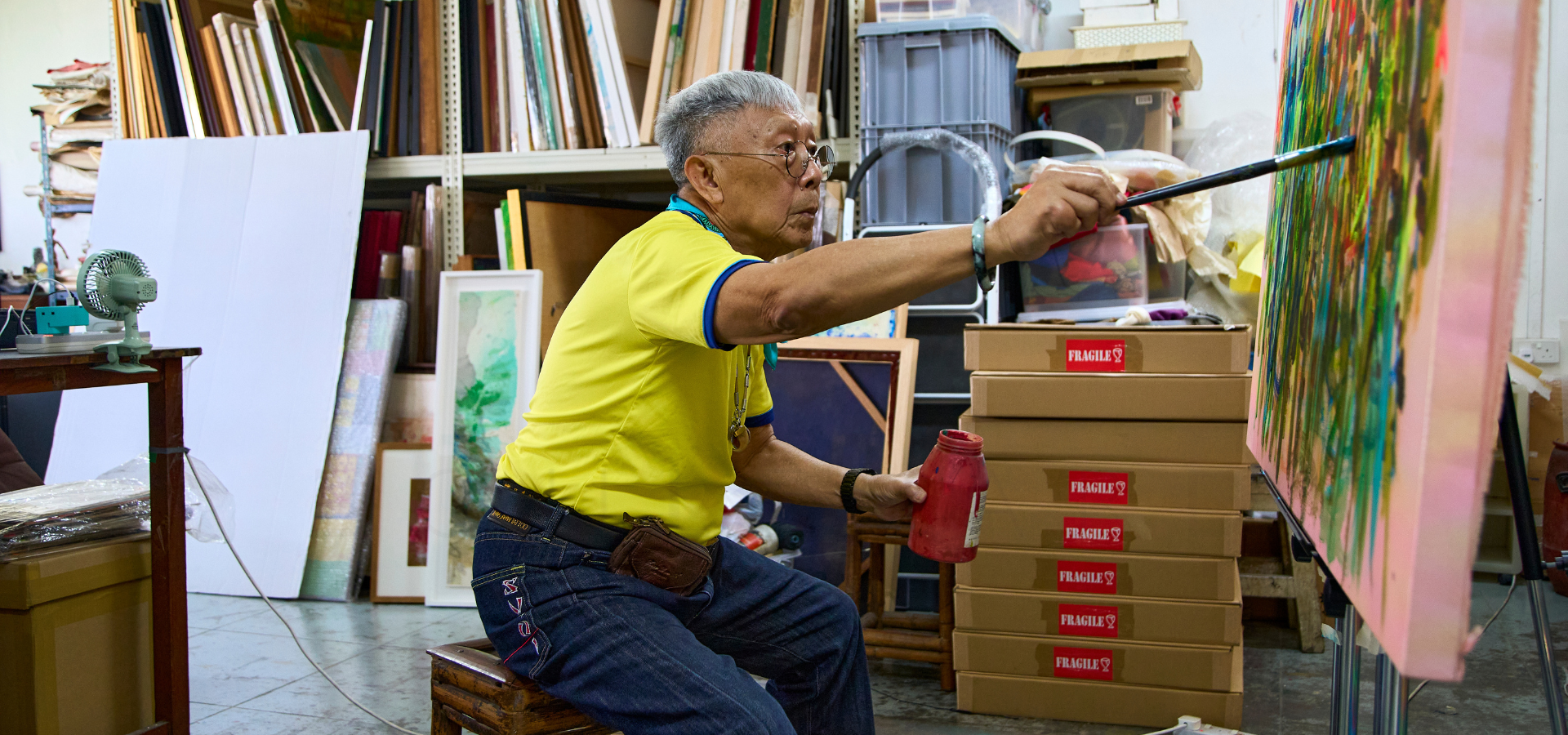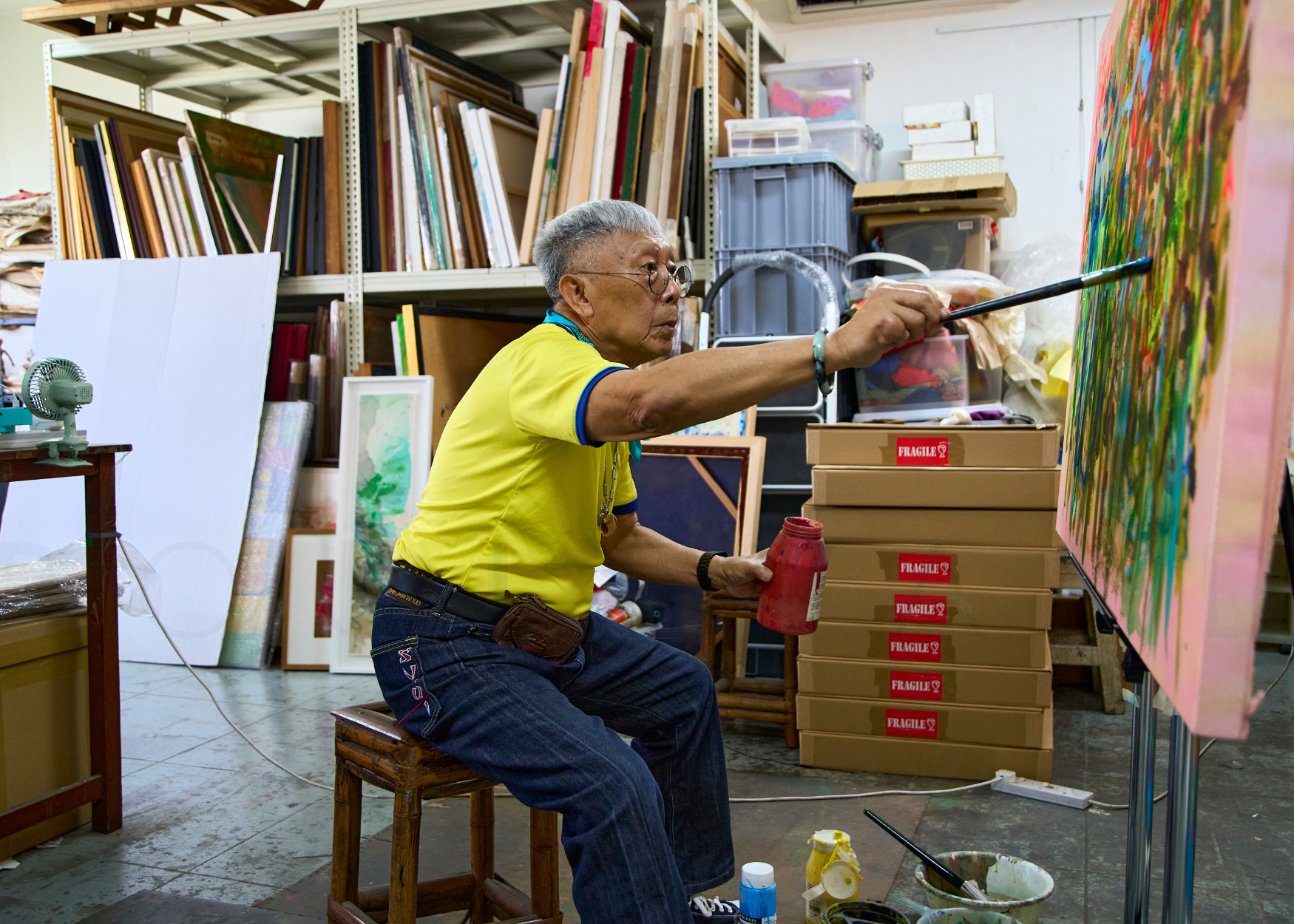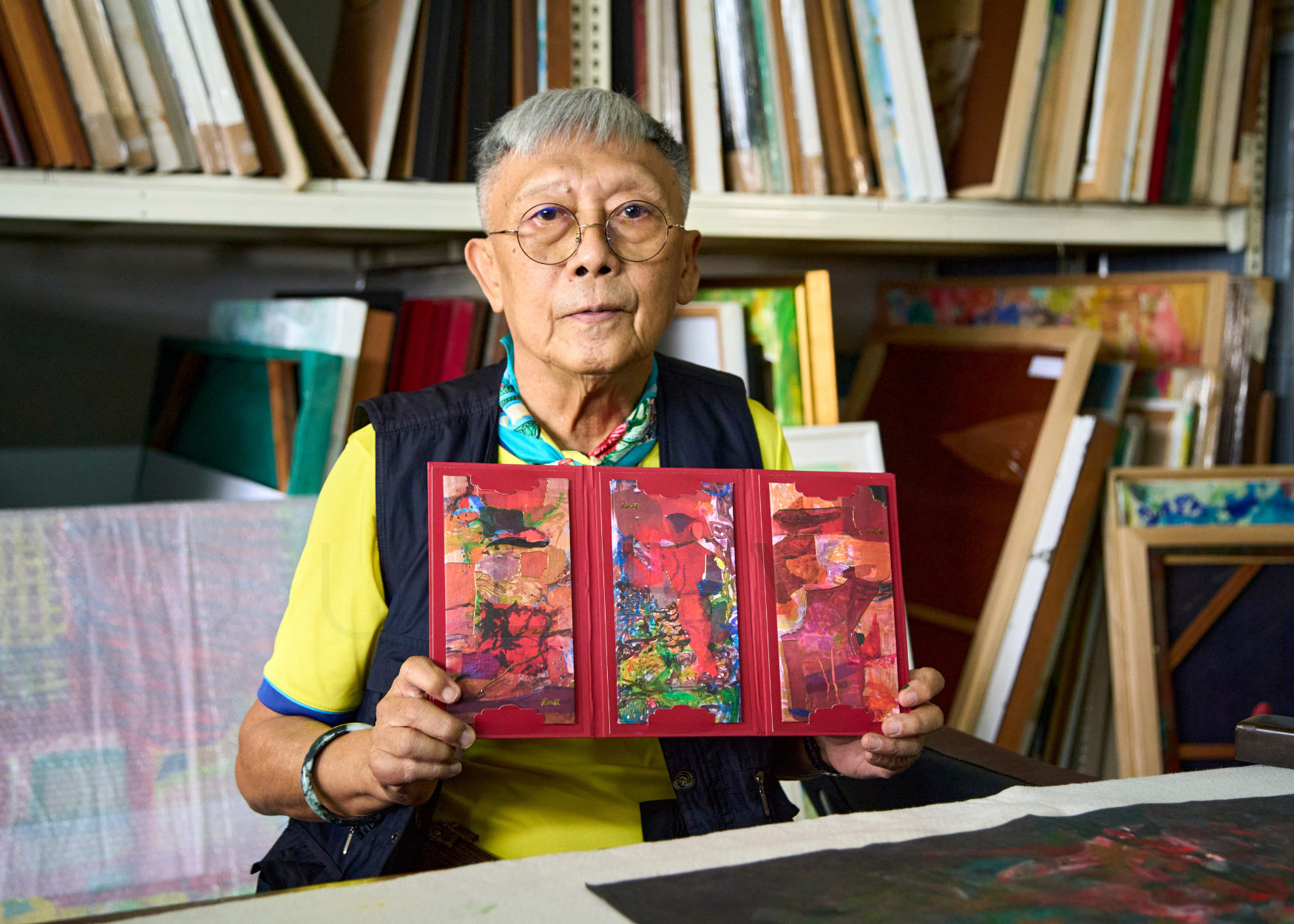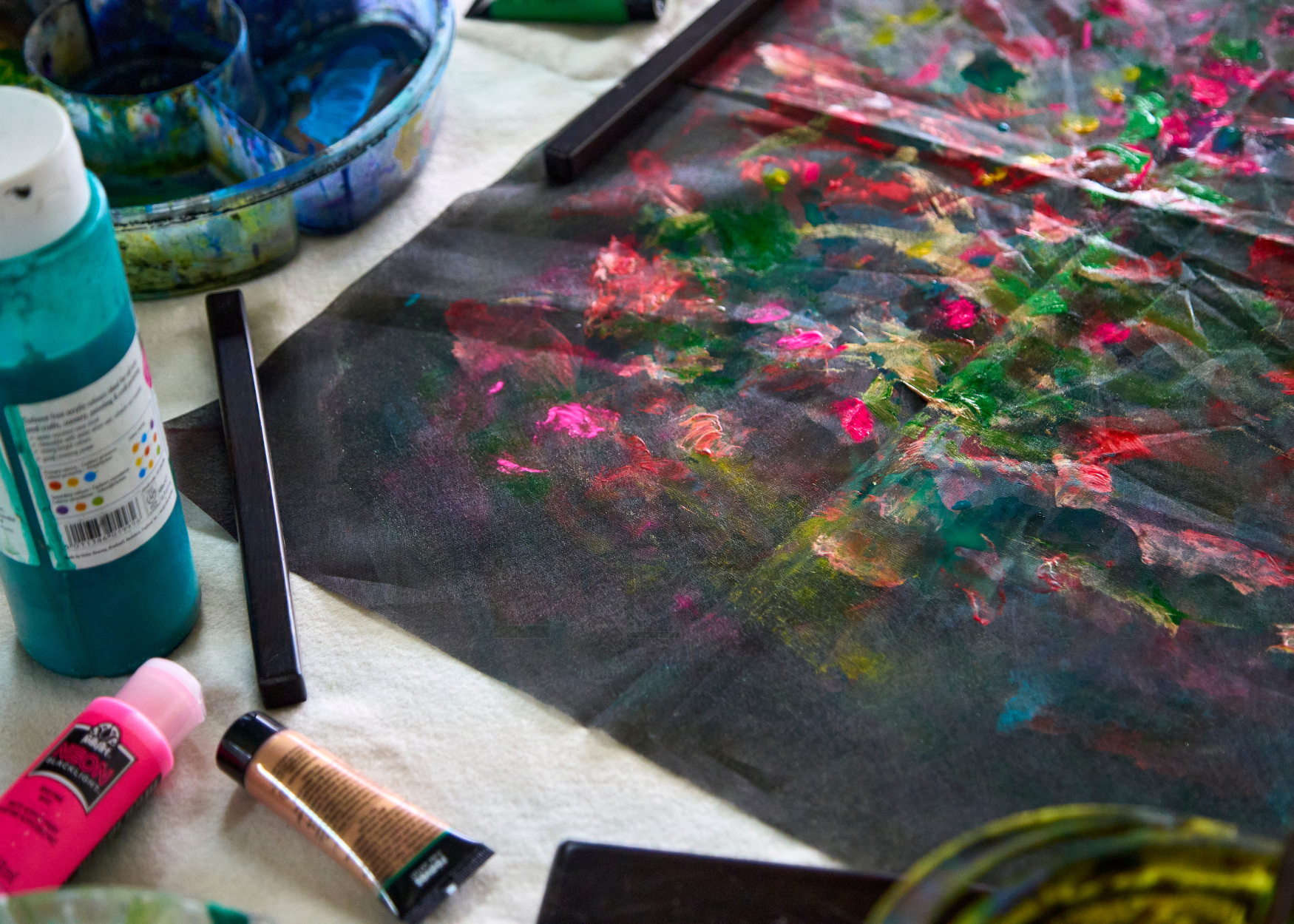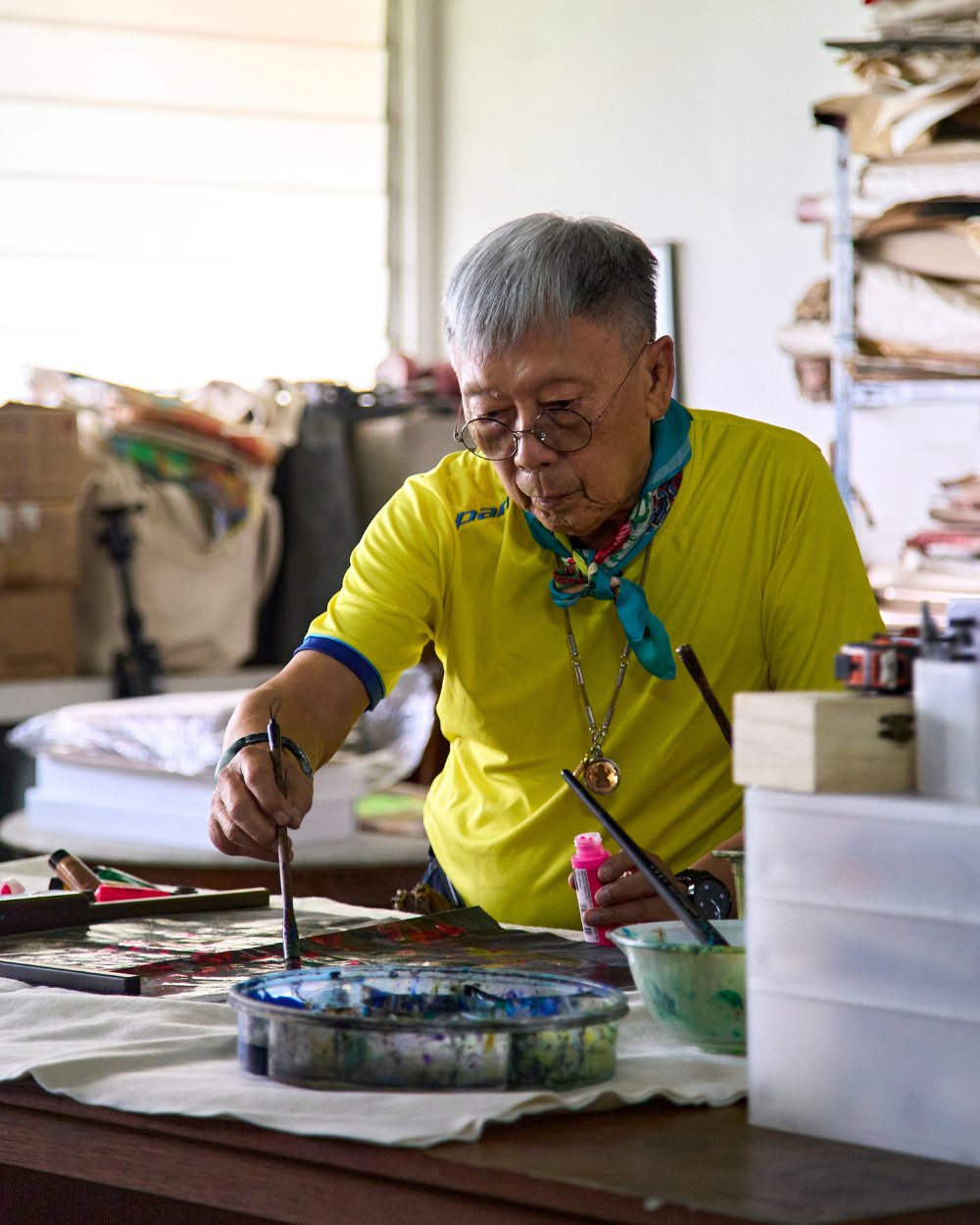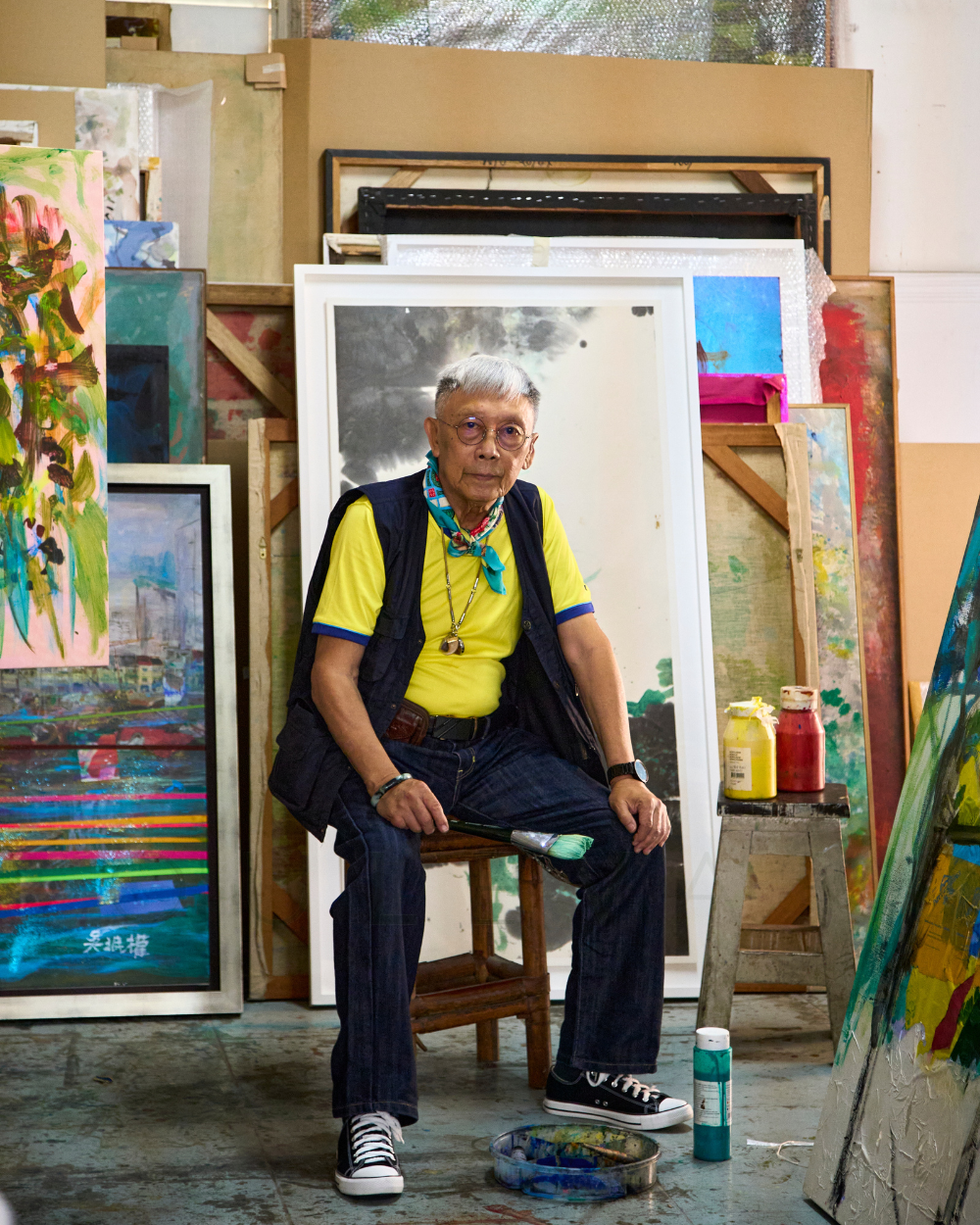The interview: Goh Beng Kwan on mentoring and new media
As Singapore emerged from the privations of World War II and transitioned into independence, it was said that the arts were a luxury the new republic could scarcely afford. Of course, it’s never been easy to make a living as an artist. But in the all-business environment of mid-century Singapore, earning a living daubing oil on canvas was especially challenging.
To keep food on the table, many of the proponents of Singapore’s post-war ‘Nanyang Style’ of painting sought employment teaching. So it was that a young student named Goh Beng Kwan, whose parents had emigrated to Singapore from Sumatra at the war’s end, found himself under the tutelage of leading artists Cheong Soo Pieng, Chen Wen Hsi and Liu Kang, who were supplementing their art careers with day jobs at the Chinese High School.
“We were so lucky to have masters like these teaching in our schools,” says Goh, now in his mid-eighties and one of Singapore’s most celebrated painters. “Can you believe that? To have those three masters, very disciplined artists, teaching us the foundation of art — I was so lucky.”
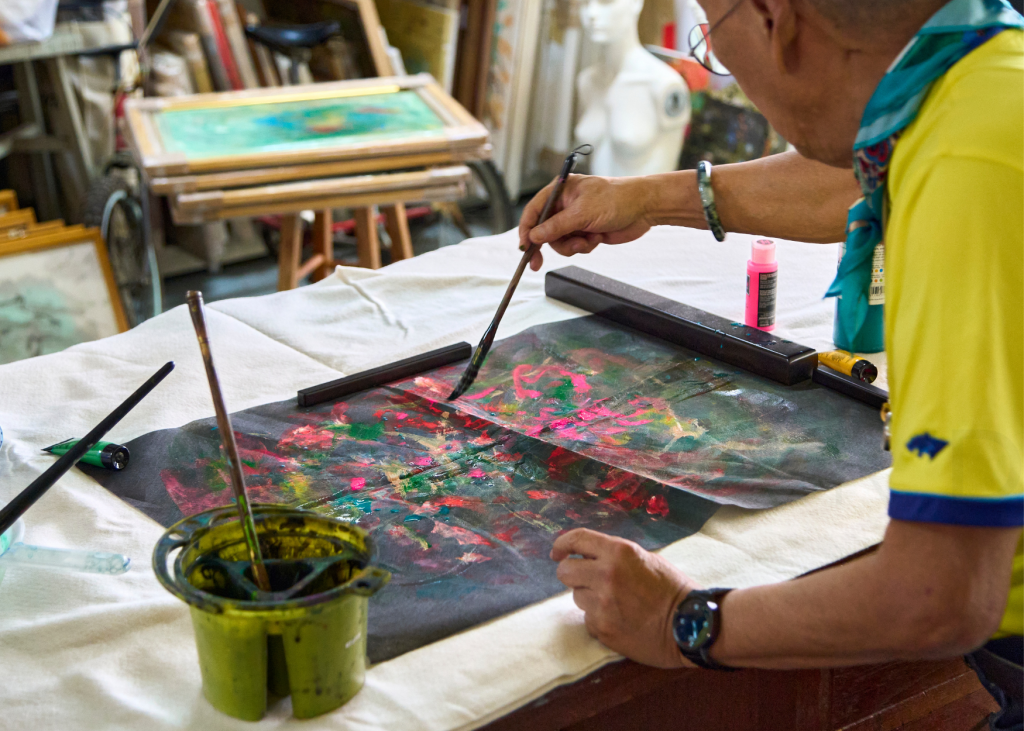
Today the tables have turned and it is Goh providing guidance to younger artists. He regularly brings aboard interns to assist and observe him at work, and takes time to offer advice to those who seek it, welcoming aspiring creatives to reach out and meet for a chat, sharing in his hard-won wisdom and experience.
It’s not just the mentee who benefits from this back-and-forth. Engaging with the next generation helps Goh stay agile, in touch with contemporary times, reappraising perspective and techniques — vital stuff for any artist. “You must always keep improving, keep developing, keep evolving,” he says. “I don’t stick to oil or acrylic or water colour. I’ve always searched for new materials.”
Now, encouraged by his teenage grandson, the spritely octogenarian has begun exploring digital art. “In the olden days, you would have to take your canvas, a big bag full of paints and brushes and everything, and go out into the sun to paint,” Goh says. “Today the kids just bring a laptop or their tablet —everything is in the tablet, limitless colours, brushes. It’s a different world. There’s no use resisting that. We have to embrace new technology…”
Along with an eclectic approach to media and format, Goh’s style has fluctuated dramatically over the years. This can occasionally perplex collectors or galleries, who may be familiar with a particular era of his work, while struggling to understand the creative output from other periods. But Goh believes it is essential that an artist continue to grow over the course of their career — even though at times this may be a commercial disadvantage.
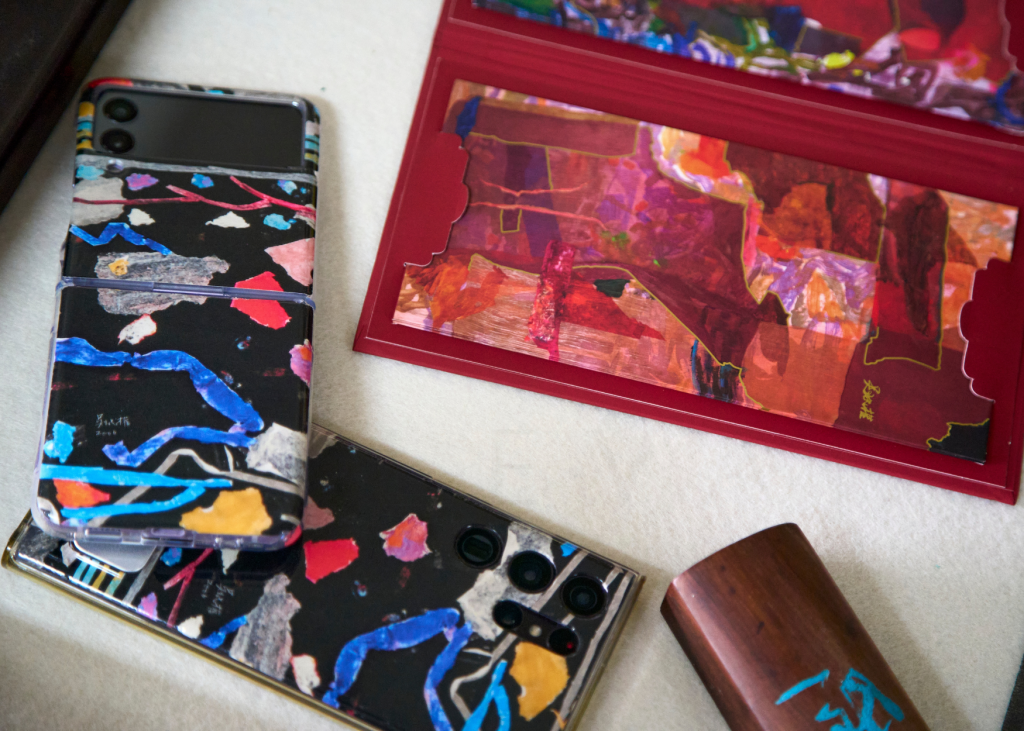
Helping join the dots between Goh’s disparate influences and inspirations, a trove of hundreds of works, charting the artist’s six-decade practice and myriad stylistic paths, can be found in the cosy studio he keeps on the East Coast. Those fortunate enough to be granted access to this space — as we were, while conducting this interview and exclusive shoot — are treated to a comprehensive overview of Goh’s catalogue.
There’s the Fauvism of his schoolboy work, depicting typical Singapore scenes in a jazzy modernist manner. (Goh flunked High Secondary Certificate art because of the examiner’s “inability to appreciate such advanced skill,” his teacher Chen reckoned.) Goh segued into an aggressive abstract expressionist style in the 1960s, when he studied at New York’s Arts Students’ League, where the faculty included such giants as Pollock, Rauschenberg and Rothko. This period is epitomized by Goh’s 1963 masterpiece Black Afternoon, completed on the day of JFK’s assassination, which hangs prominently in the National Gallery of Singapore.
This seminal work narrowly escaped being lost to history, Goh explains. “I was taking it to a gallery exhibition in New York and I had it strapped to the roof of my Volkswagen. It was raining, so I was driving very fast, and the canvas flew off the roof at some stage on the journey,” he recalls. “When I got to the gallery, it was gone — forever, I thought. Luckily, a friend of mind saw it sitting beside the road, called me and told me where I could collect it.”
In the 1970s, Goh had returned to Singapore, was newly married and had begun a family. A bright optimism began to imbue his work. Then, in the ‘80s, Goh’s art became more muted and subdued, while achieving significant critical acclaim: he won the inaugural UOB Painting of the Year art prize in 1982 and was conferred Singapore’s Cultural Medal for Visual Arts in 1989.
Goh’s daughter Hazeleen recently gave up her career in finance to help her father maintain his legacy. She says her dad’s art gained a new sense of joie-de-vivre at the dawn of the 21st century, when she and her sister were finally out on their own and Goh no longer felt the pressure of supporting his kids. Always a keen traveller, Goh indulged his wanderlust over the past 20 years, the people, scenery and culture of various Asian countries literally coloring his more recent catalogue.
During this time, Goh says, “I was invited to participate in workshops in China, Indonesia, Thailand, Vietnam… That was very important because all the participating artists, sometimes 20 or 30 artists, we’d learn from each other. Techniques, materials, styles — we’d share. It was very good for me to participate. I would learn, but I would also share. It’s so important to share what you know, to help other artists.”
Many of Goh’s collectors have become close friends over the years and today, he enjoys forging personal relationships with younger art-lovers who’ve grown to appreciate his work. Those considering an acquisition are often invited to spend time at the studio (some linger several hours) while Goh and his daughter explain particular works, so that the collector gains a real understanding and appreciation for the piece that will hang on their wall.
Knowing what was going on in Goh’s life and emotions at the time a work was created lends the art richer meaning and greater depth. For his part, Goh says, “When I’m invited to a collector’s home and I see one of my artworks displayed, see how they’ve cherished and enjoyed that work as part of their everyday life, that gives me a feeling of enormous satisfaction.”
Though Singapore’s art scene has advanced tremendously since the 1960s when Goh was starting out — “Back then, parents really didn’t want their children to pursue the arts,” he says — it’s still no easy task to make a living as an artist. Goh himself paid the bills by running a framing shop for many years. To young artists who feel the calling to make a career in this challenging but creatively rewarding field, Goh counsels, “Work hard. Work harder. Never, never give up.”
